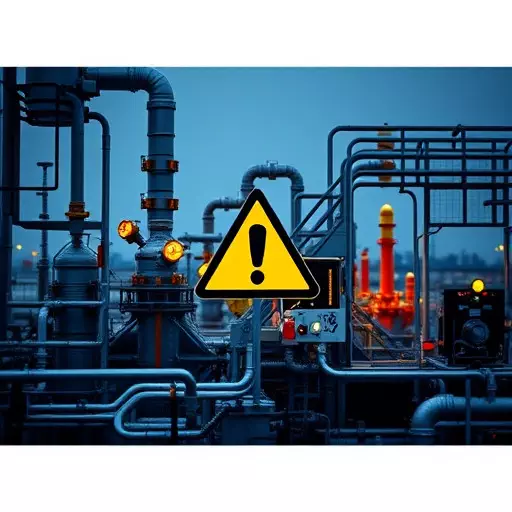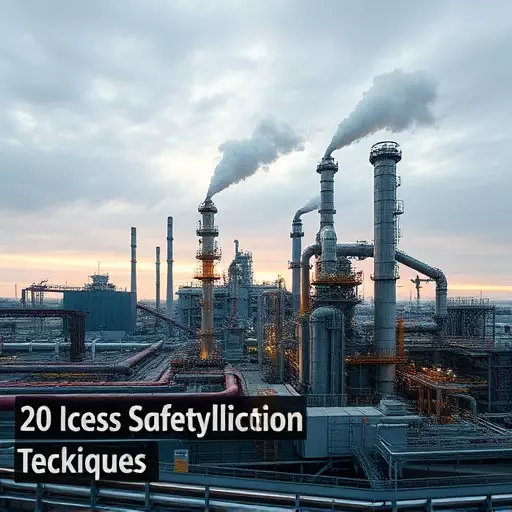Establishing a robust safety culture in Process Safety Management (PSM) starts with effective hazard identification techniques through Process Hazard Analysis (PHA). Consulting firms utilize advanced methods like fault tree analysis and LOPA integration to quantify risks, identify vulnerabilities, and prioritize hazards. Standardized PHA methodologies, regular control measure reviews, open communication, and training empower employees to actively participate in safety, fostering a culture where concerns are voiced without fear. This collaborative approach ensures comprehensive risk assessment and mitigation for complex industrial processes.
“Unveiling the layers of protection: A comprehensive guide to enhancing process safety through Layer of Protection Analysis (LOPA) and its integration with Process Hazard Analysis (PHA). This article explores the critical role of hazard identification techniques in fostering a robust safety culture within PSM consulting.
We delve into best practices, real-world case studies, and strategic approaches to build and strengthen safety cultures. By combining LOPA with PHA, organizations can navigate complexities, mitigate risks, and ensure a vibrant, resilient safety posture.”
- Understanding Layer of Protection Analysis (LOPA) in Process Safety Management
- The Role of Hazard Identification Techniques in Developing a Robust Safety Culture
- Delving into Process Hazard Analysis (PHA): A Comprehensive Guide
- Integrating LOPA with PHA for Enhanced Process Safety
- Building a Strong Safety Culture: Best Practices and Strategies
- Case Studies: Real-World Applications of LOPA and PHA in PSM Consulting
Understanding Layer of Protection Analysis (LOPA) in Process Safety Management

Layer of Protection Analysis (LOPA) is a systematic approach within Process Safety Management (PSM) that helps identify and mitigate risks associated with industrial processes. It involves evaluating and categorizing layers of protection, focusing on both technical and administrative safeguards. By understanding potential hazards using hazard identification techniques such as Process Hazard Analysis (PHA), LOPA ensures critical safety functions are in place and functioning properly to prevent or control hazardous events.
This method provides a structured framework for quantifying the risk reduction achieved by each layer of protection, allowing organizations to prioritize resources effectively. It promotes a robust safety culture, enabling consultants and facility operators alike to make informed decisions about process design, equipment selection, and operational procedures, ultimately enhancing overall process safety management.
The Role of Hazard Identification Techniques in Developing a Robust Safety Culture

The first step in fostering a robust safety culture within Process Safety Management (PSM) is to employ effective hazard identification techniques. These techniques form the foundation of a comprehensive Process Hazard Analysis (PHA), which aims to uncover potential risks associated with industrial processes. By systematically evaluating various aspects of a process, including its design, operations, and surroundings, organizations can identify hazards at an early stage. This proactive approach enables them to implement suitable controls and measures to mitigate those risks.
Process safety management consulting professionals emphasize the importance of utilizing advanced hazard identification techniques such as fault tree analysis, event tree analysis, and what-if scenarios. These tools help in quantifying risks, identifying vulnerable points in a process, and prioritizing hazards based on their potential impact and likelihood. Incorporating these techniques into standard practices ensures that potential issues are addressed before they escalate, thereby enhancing overall process safety.
Delving into Process Hazard Analysis (PHA): A Comprehensive Guide

Delving into Process Hazard Analysis (PHA) is a crucial step in ensuring robust process safety management consulting. PHA serves as a comprehensive guide for identifying and mitigating hazards within industrial processes, offering a structured approach to risk assessment. By employing advanced hazard identification techniques, professionals can unearth potential risks that might be overlooked during routine inspections or initial design phases.
This meticulous process involves a multidisciplinary team meticulously examining each step of a chemical, pharmaceutical, or other high-risk process. They systematically evaluate potential failures, their consequences, and the effectiveness of existing safety measures. The outcome is a detailed report outlining recommended improvements, ensuring that the facility operates with enhanced safety protocols and adherence to industry standards.
Integrating LOPA with PHA for Enhanced Process Safety

Integrating Layer of Protection Analysis (LOPA) with Process Hazard Analysis (PHA) is a powerful strategy for enhancing process safety in any industrial setting, especially within Process Safety Management (PSM) consulting services. LOPA and PHA are complementary hazard identification techniques that work together to uncover and mitigate potential risks associated with complex processes. By combining these methods, organizations can achieve a more comprehensive understanding of their operational vulnerabilities.
LOPA involves assessing and categorizing hazards based on the desired level of risk reduction, while PHA focuses on systematically reviewing processes to identify and evaluate hazards, taking into account human decision-making and system limitations. Integrating these approaches allows for a structured evaluation of existing safety measures and the identification of gaps in process controls. This integration enables consultants and industry professionals to develop more robust safety strategies, ensuring that critical risks are addressed effectively, thus fostering a stronger safety culture within PSM practices.
Building a Strong Safety Culture: Best Practices and Strategies

Building a robust safety culture is essential for any organization involved in complex industrial processes, and Process Safety Management (PSM) plays a pivotal role in achieving this. A strong safety culture fosters an environment where employees at all levels actively participate in identifying and mitigating risks associated with their work. One of the fundamental practices to strengthen safety culture is conducting thorough Process Hazard Analysis (PHA). This systematic approach involves examining each stage of a process, from raw material input to final product output, using robust hazard identification techniques.
PSM consulting firms often recommend implementing standardized PHA methodologies and regularly reviewing existing control measures. By fostering open communication and encouraging workers to voice concerns without fear of retaliation, organizations can create a culture where safety is everyone’s responsibility. Regular training sessions, involving both management and staff, on hazard recognition, risk assessment, and appropriate control strategies are key to empowering employees to take an active role in maintaining a safe working environment.
Case Studies: Real-World Applications of LOPA and PHA in PSM Consulting



